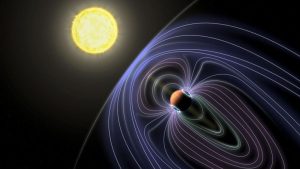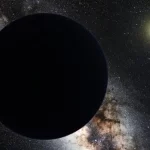Key Takeaways:
- Scientists may have detected radio emissions from an exoplanet for the first time, offering a new window into distant worlds.
- The research focused on Tau Boötes, a star system 51 light-years away, with at least one known exoplanet.
- These radio emissions could unlock insights into exoplanetary magnetic fields, shedding light on their atmospheres and histories.
- Previous studies on Jupiter’s radio emissions provided a crucial reference point for this groundbreaking discovery.
- While promising, researchers emphasize the need for additional observations to confirm the source of the detected radio signal.
In a groundbreaking development, scientists may have encountered the first signals of an exoplanet’s radio emissions, potentially revolutionizing our understanding of distant celestial bodies.
The research, led by Jake Turner, an astronomer at Cornell University, utilized a radio telescope in the Netherlands to scrutinize stars known to host exoplanets. By comparing observations of Jupiter, extrapolated as if viewed from a star system light-years away, one system, Tau Boötes, emerged as particularly noteworthy. Situated 51 light-years away in the constellation Boötes, it harbors at least one confirmed exoplanet, Tau Boötes b.
While the findings hold immense promise, Turner and his team exercise caution, highlighting the need for further observations to conclusively attribute the signal to Tau Boötes b. This methodological vigilance stems from the profound scientific implications of such a discovery, potentially offering invaluable insights into the magnetic fields of exoplanets and, consequently, their overall characteristics.
The inception of this research was rooted in the study of Jupiter’s radio emissions, providing a foundational framework for extrapolating observations to exoplanetary environments. Subsequently, the scientists turned to data collected in 2016 and 2017 by the Low Frequency Array (LOFAR) in the Netherlands. Besides the signal from Tau Boötes b, the researchers suggest the possibility of a fainter signal originating from the star Upsilon Andromedae or its associated planet.

The allure of detecting radio emissions from exoplanets lies in the wealth of information they can yield about the magnetic fields governing these distant worlds. These magnetic fields wield substantial influence over surface conditions, exemplified by Earth’s protective magnetic shield that safeguards its atmosphere. Furthermore, they can serve as crucial indicators of a planet’s structural composition and historical evolution.
Despite their paramount significance, directly studying exoplanetary magnetic fields remains a formidable challenge. This elusive nature necessitates the employment of radio emissions as an intermediary tool, bridging the gap between theoretical understanding and empirical observation. As Turner elucidates, “We learned from our own Jupiter what this kind of detection looks like. We went searching for it and we found it.”
Nonetheless, this revelation marks merely the inception of a tantalizing scientific journey. While the detected radio signal holds promise, uncertainty persists, leaving room for alternative sources such as the stars themselves. Therefore, the imperative for follow-up observations remains paramount in the quest to unravel the mysteries of these enigmatic exoplanetary radio emissions.
The comprehensive research findings are detailed in a forthcoming paper in the esteemed journal Astronomy & Astrophysics, already accessible for eager readers online. This breakthrough not only opens a window into the magnetic realms of distant worlds but also exemplifies the unyielding determination of scientists to probe the cosmos’ most intricate enigmas.


